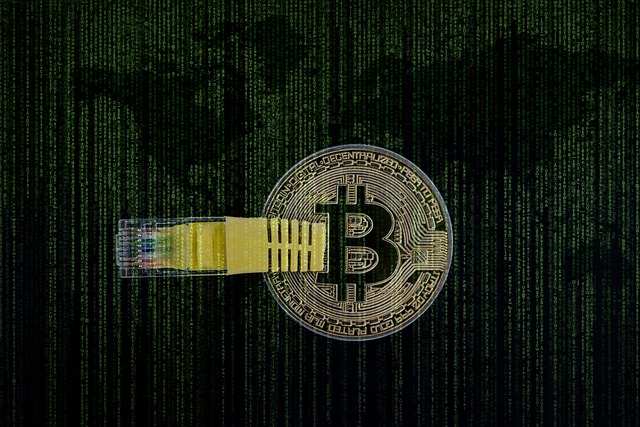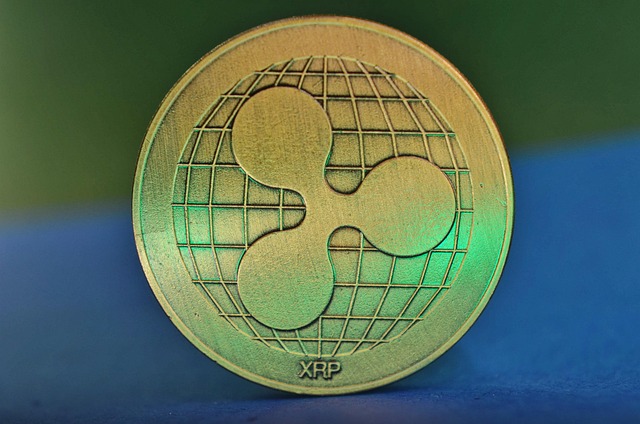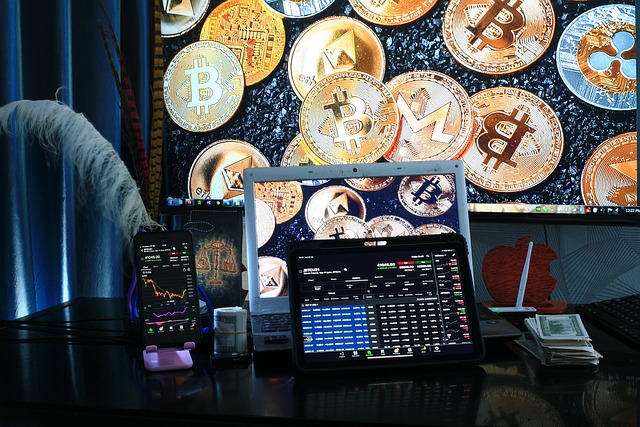Trump fought the bond market, the bond market won: Saifedean Ammous
Analysts are criticizing the financial implications of US President Donald Trump’s import tariffs, a development that some say highlights Bitcoin’s unique economic properties during times of global uncertainty.Trump’s 90-day pause on higher reciprocal tariffs, reverting them to a 10% baseline for most countries except China, has exposed vulnerabilities in the US bond market, according to critics.Economist and author of The Bitcoin Standard, Saifedean Ammous, said Trump’s decision to reverse the higher tariffs was likely a reaction to rising bond yields, suggesting the administration’s hand was forced.“Trump fought the bond market and the bond market won,” Ammous said in an April 23 X post. “The gambit seemed to work for the first day, and the huge crash in the stock market was presented as a small price to pay for fiscal sustainability.“But then the bonds began to crash, and it became clear how disastrous the tariffs were, and how wrong it was to expect that deliberately crashing the stock market would boost the bond market,” he added.Source: Saifedean AmmousRelated: Trump’s tariff escalation exposes ‘deeper fractures’ in global financial systemTreasury yields spike after tariff moveFollowing Trump’s tariff announcement, CNBC data shows that the 10-year Treasury yield surged from under 4% to 4.5% amid a sell-off driven by inflation and recession concerns. 10-year bond yield, 1-year chart. Source: CNBC“The rise in yields was the exact opposite of what the administration wanted, and reversing course on the tariffs half a day after they go into effect was absolutely devastating for Trump’s negotiating position,” Ammous said.Some analysts, including Global Macro Investor founder Raoul Pal, have suggested the tariff maneuvering may only be “posturing” for the US to reach a trade agreement with China.“All of the talk about China buckling under the threat of Trump now sounds hilarious in retrospect, when Trump could not keep his tariffs in place for two days,” Ammous said, adding that China “showed absolutely no inclination” to reach out and strike a deal.Delays in reaching a trade agreement may limit the recovery of both equity and cryptocurrency markets, which hinge on the outcomes of the trade negotiations, according to Nansen analysts.Meanwhile, Bitcoin (BTC) is acting “less like a tech stock and more like a hedge against economic uncertainty,” after Trump signaled a “substantial reduction in tariffs on Chinese goods,” Nexo dispatch analyst Iliya Kalchev told Cointelegraph.Related: Crypto, stocks enter ‘new phase of trade war’ as US-China tensions riseTrade wars reignite the need for a Bitcoin standardThe situation has revived long-standing proposals to back the US dollar with Bitcoin. Ammous said the US should keep buying BTC until the government holds enough to fully back the dollar supply, ultimately switching to a Bitcoin standard:“Keep buying bitcoin until the value of the bitcoin held by the US government is enough to back the entire US dollar supply, then go on a bitcoin standard where dollars are redeemable for bitcoin, and have the government never spend more than it earns.”Historically, the dollar was backed by gold and redeemable for a fixed amount of the precious metal until 1933, when President Franklin D. Roosevelt suspended gold convertibility in response to the Great Depression.In 1971, President Richard Nixon halted the dollar’s convertibility into gold, aiming to protect the US gold reserves and stabilize the economy, marking the beginning of the fiat currency system that remains in place today.Bitcoin’s fixed supply, which is hard-coded in its tokenomics, makes it a popular digital competitor to gold. Joe Burnett, director of market research at Unchained, predicted that Bitcoin may rival or surpass gold’s market capitalization in the next decade, projecting that the Bitcoin price will surpass $1.8 million by 2035.Magazine: Bitcoin ATH sooner than expected? XRP may drop 40%, and more: Hodler’s Digest, March 23–29
SEC discusses deepening US-El Salvador ties amid deportation backlash
Officials with the US Securities and Exchange Commission’s (SEC) crypto task force met with the El Salvador National Commission on Digital Assets (CNAD) to discuss regulation and a proposed cross-border sandbox.In an April 22 memo, the SEC’s crypto task force reported meeting with officials from El Salvador, Perkin Law Firm, and former Goldman Sachs partner Heather Shemilt as part of the commission’s outreach to the industry. The representatives discussed US-El Salvador cross-border collaboration on crypto regulation at a time when the relationship between the two countries was in the national spotlight over immigration and US deportations to an El Salvador prison.According to the meeting notes, El Salvador’s national commission agreed to collaborate with the SEC to establish a sandbox pilot program, capped at $10,000 for each scenario. The program proposed allowing brokers licensed in the US to obtain a digital asset license in El Salvador and issue “non-securities” tokens in collaboration with a local company.Many in the crypto industry see Salvadoran President Nayib Bukele as behind the country’s efforts to adopt cryptocurrency since he announced legislation to recognize Bitcoin (BTC) as legal tender in 2021. Bukele met with US President Donald Trump on April 14, discussing details of a $6 million deal in which the Trump administration has been sending immigrants, whose legal status to be in the US is unclear, to prisons in El Salvador. Some of these deportations violated orders from federal judges.Related: Bitcoin takes back seat as Trump, Bukele focus on trade and immigrationNew SEC chair sworn inIt’s unclear if the Trump administration may intend to deepen ties to El Salvador through additional regulatory partnerships or stepping up deportations in its existing deal. Cointelegraph reached out to SEC Commissioner Hester Peirce, who heads the crypto task force, for comment, but did not receive a response at the time of publication.The meeting report came roughly a day after the SEC announced that Paul Atkins had been sworn in as the commission’s new chair, following Gary Gensler and acting chair Mark Uyeda. During his swearing-in ceremony, Atkins said his top priority would be to “provide a firm regulatory foundation for digital assets.” Magazine: Ethereum maxis should become ‘assholes’ to win TradFi tokenization race
Ethereum bounces back as market dominance recovers from all-time low
Ethereum’s price has surged after having been in the doldrums for weeks, helping boost its market share after it hit record lows.Ether (ETH) has surged almost 15% over the past 24 hours, topping $1,800 on April 23. It has outperformed Bitcoin, which notched a 6% gain, and the wider crypto market, which has climbed almost 5% to reclaim a total market value of $3 trillion. Ether has now managed to recover almost 30% since its April 9 crash to $1,400, leading some analysts to suggest that the worst may be over for the world’s second-largest crypto asset.“You can hate Ethereum all you want, but when it has a big day, the entire crypto ecosystem goes up,” crypto trader and analyst “Income Sharks” commented to their 640,000 X followers.Market analyst “Ash Crypto” said ETH was “about to explode,” drawing comparison from the current chart pattern for Ether to that for Bitcoin’s performance in late 2024. BTC vs ETH performance and prediction. Source: Ash Crypto Jeff Mei, chief operating officer at the crypto exchange BTSE, was not conviced Ethereum was moving idependently, and told Cointelegraph that Ether’s gain “was largely due to it tracking the price of Bitcoin and the overall market,” and that that Paul Atkins’ confirmation as chair of the US Securities and Exchange Commission had boosted overall market sentiment.Earlier this month, ETH had fallen back to bear market prices and had seen its market share dwindle amid a wide market downturn marred by fears of a trade war. On April 22, analyst “Rekt Capital” said that ETH’s market dominance has fallen back to all-time lows but “managed to protect 2019 all-time lows as support.” ETH dominance fell to its September 2019 low of 7% on April 22, according to TradingView. However, its subsequent price pump has seen that share bounce off this critical support level and return above 7.5% on April 23. ETH dominance lows. Source: Rekt CapitalFundamental catalysts supporting the move10x Research’s Markus Thielen told Cointelegraph that it hasn’t taken much to drive Ethereum higher, as a “heavily shorted market is now experiencing a squeeze.” Related: Ethereum Foundation shifts focus to user experience, layer-1 scaling Technically, Ethereum was oversold on both daily and weekly timeframes, setting the stage for a rebound, he said. “With the upcoming upgrade moving to mainnet, there’s also a fundamental catalyst supporting the move.” Magazine: Altcoin season to hit in Q2? Mantra’s plan to win trust: Hodler’s Digest
XRP Ledger Foundation spots ‘crypto stealing backdoor’ in code library
The XRP Ledger Foundation has identified a “serious vulnerability” in the official JavaScript library used for interacting with the XRP Ledger blockchain network, the nonprofit said.On April 22, blockchain security specialist Aikido said in a blog post that XRP Ledger’s open-source JavaScript library was “compromised by sophisticated attackers who put in a backdoor to steal cryptocurrency private keys and gain access to cryptocurrency wallets.” The JavaScript library includes programs enabling developers to interact with the XRP Ledger and is distinct from the blockchain network itself. ‘“[T]his package is used by hundreds of thousands of applications and websites making it a potentially catastrophic supply chain attack on the cryptocurrency ecosystem,” Aikido said. The XRP Ledger Foundation has already upgraded the code repository to “remove the previously compromised version,” it said in an April 22 post on the X platform.Aikido identified unusual code in XRP’s JavaScript package. Source: AikidoRelated: Coinbase Derivatives lists XRP futuresIt added that several XRP Ledger ecosystem projects — including XRPScan, First Ledger, and Gen3 Games — confirmed that they were not impacted by the incident. The XRP (XRP) token ended the US trading day up more than 3.5% despite news of the security breach, according to CoinGecko. The token has a market capitalization of more than $125 billion and a fully diluted value of approximately $215 billion. XRP’s token price on April 22. Source: CoinGeckoInstitutional adoptionLaunched in 2012, XRP Ledger is among the oldest blockchain networks and specializes in payments and decentralized finance (DeFi) applications for institutions. It has been gaining prominence in recent months as a friendlier US regulatory environment paves the way for broader institutional adoption of the network’s token and ecosystem projects. The XRP token’s price increased by upward of 300% after crypto-friendly US President Donald Trump prevailed in the November presidential election, according to CoinGecko. Since then, several asset managers have asked the US Securities and Exchange Commission (SEC) to approve US-listed exchange-traded funds (ETFs) holding the XRP token. On April 21, Coinbase listed futures contracts for the XRP token on its US derivatives exchange. Magazine: Crypto ‘more taboo than OnlyFans,’ says Violetta Zironi, who sold song for 1 BTC
US Bitcoin ETFs clock biggest inflows since January as crypto markets gain
US-based Bitcoin exchange-traded funds (ETFs) had their largest day of net inflows since late January, as crypto markets remained buoyant over the Easter weekend.The 11 Bitcoin (BTC)-tracking funds saw a joint net inflow of $381.3 million on April 21, largely carried by a $116.1 million inflow into the ARK 21Shares Bitcoin ETF (ARKB), according to CoinGlass data.It’s the largest inflow day for the ETFs since the funds had a $588.1 million joint net inflow on Jan. 30, days after Bitcoin hit a peak and was trading with a six-figure price tag.Total Bitcoin ETF flows since their launch in January 2024. Source: CoinGlassThe ETFs have struggled to maintain inflows over the past few weeks amid US President Donald Trump’s trade war threats. CoinGecko shows Bitcoin fell below $100,000 in early February and hit a 2025 low of $74,773 on April 7, days after Trump placed tariffs on every country, which also caused a stock market slump.The Fidelity Wise Origin Bitcoin Fund (FBTC) saw the second-largest inflow for April 21, with $87.6 million, while the Grayscale Bitcoin Trust (GBTC) and the company’s Bitcoin Mini Trust ETF (BTC) saw joint net inflows of $69.1 million.The Invesco Galaxy Bitcoin ETF (BTCO) and the WisdomTree Bitcoin Fund (BTCW) saw no inflows or outflows on April 21. Source: CoinGlassBlackRock’s iShares Bitcoin Trust ETF (IBIT), the largest of the group by assets under management, saw net inflows reach $41.6 million, about half of the inflows it saw before the weekend trading break on April 17.Crypto stays afloat over long weekendUS markets had shut down on April 18 in observance of Good Friday, and trading on Monday, April 21, saw them close in the red, with the S&P 500 down 2.4%, while the Nasdaq and the Dow Jones each dropped 2.5%.Related: Bitcoin rally above $100K may follow US Treasury buybacks — Arthur HayesThe crypto markets, meanwhile, were able to hold onto gains made over the long weekend, with the total crypto market capitalization climbing by $800 billion over the three-day break to hold at $2.84 trillion.Bitcoin has boosted that total, having climbed above a market value of $1.75 trillion for the first time since March 22 as its price struck above $88,500, a four-week high.Magazine: Financial nihilism in crypto is over — It’s time to dream big again
Paul Atkins’ loosely linked RSR token rises 13% after Coinbase listing
A governance token for the Reserve Protocol stablecoin, launched by a firm previously advised by sworn-in SEC Chair Paul Atkins, has surged over 13% after crypto exchange Coinbase announced that it will list the token. Atkins was an early adviser for the stablecoin firm around the time it launched in 2019, according to Reserve Protocol’s CEO Nevin Freeman. He is no longer consulting at the firm.The Reserve Rights (RSR) token is the governance token aimed at ensuring the stability of the Reserve Protocol’s stablecoin, Reserve Dollar (RSV). In an April 21 X post, Coinbase said it would list the RSR token on the Ethereum layer-2 network Base on April 22 at 9 am Pacific Time (4 pm UTC). Source: Coinbase AssetsAtkins news bumps up RSR’s price even furtherThe Coinbase listing, combined with the news of Atkins officially being sworn in as SEC chair on April 21, pushed the token up 13.6% to a near two-month high of $0.00835 on April 22, CoinGecko data shows. Prior to Atkins being sworn in, RSR had already risen double digits to around $0.0081.It is currently the 143rd largest coin by market capitalization at $464 million.Atkins said he will be focused on ensuring the US is the “best and most secure place in the world to invest and do business,” while ensuring sufficient consumer protection measures are in place.It comes two weeks after the Senate confirmed Atkins as SEC chair in a 52-44 vote on April 9. Related: Crypto in a bear market, rebound likely in Q3 — CoinbaseAtkins takes over from Mark Uyeda, who has been the SEC’s acting chair since Jan. 20, when former chair Gary Gensler stepped down.Since US President Donald Trump returned to office, the SEC created a Crypto Task Force to consult with the industry on regulation and dropped several crypto-related investigations and enforcement actions undertaken by the Gensler-led SEC.Atkins is expected to take a more crypto-friendly approach, telling a Senate confirmation hearing in March that a priority of his at the SEC would be to provide a firm regulatory foundation for crypto assets through a “rational, coherent and principled approach.” Magazine: Memecoin degeneracy is funding groundbreaking anti-aging research
XRP price eyes 70% rally ahead of CFTC-regulated futures launch on Coinbase
XRP (XRP) has dropped nearly 40% since hitting its multi-year high of $3.40 three months ago. Still, its ability to hold above key technical support levels, combined with a potentially market-shifting derivatives listing, has prompted some analysts to maintain a bullish outlook for the months ahead.XRP/USD daily price chart. Source: TradingViewCoinbase XRP futures may launch on April 21From a fundamental perspective, XRP may receive a boost from the anticipated launch of XRP futures contracts on the Coinbase Derivatives platform, scheduled for April 21 under the US Commodity Futures Trading Commission’s (CFTC) oversight.Source: XThis development may inject fresh liquidity and institutional interest into the market, helping catalyze the technical breakouts projected above.XRP price chart painting Wyckoff reaccumulation XRP’s ongoing consolidation phase resembles a classic Wyckoff reaccumulation pattern, according to technical analyst Charting Guy.The Wyckoff reaccumulation pattern is a mid-cycle structure that often precedes the next leg of a broader uptrend. It suggests that smart money is absorbing supply during the cooldown, setting the stage for a potential breakout.XRP established support and began consolidating in late 2024, marking Phases A and B of the Wyckoff reaccumulation pattern. In early April 2025, the price formed a “Spring” followed by a successful “Test,” signaling seller exhaustion.XRP/USD daily price chart. Source: TradingView/Charting GuyAs of April 21, XRP is attempting to break above the descending “Creek” trendline. A breakout would confirm a “Jump Across The Creek” (JATC) and entry into Phase D. If confirmed, XRP could enter Phase E and rally 70% toward $3.55 in the coming weeks, a level aligning with the pattern’s Last Point of Support (LPS).XRP/USD weekly price chart. Source: TradingViewA Fibonacci retracement graph drawn from $3.55-swing-high to $0.14-swing-low presents $5.65 as the upside target for June if XRP price breaks above $3.55.Falling wedge aligns with XRP’s bullish outlookThe upside outlook aligns with XRP’s prevailing falling wedge pattern, as spotted by chartist “Jobcfx” on X.Notably, the bullish reversal structure has been narrowing since February 2025. A breakout above the wedge’s upper trendline, currently around the $2.20-2.40 area, would signal the start of a new rally.XRP/USD daily price chart. Source: TradingViewFalling wedge breakouts typically target a move equal to the pattern’s maximum height. In XRP’s case, if it breaks above $2.20, the projected upside target for May lands near $4.00, aligning with the Wyckoff reaccumulation’s Phase E breakout zone.Related: XRP price analysts project $10 next, ‘optimistic’ target of $20Interestingly, Bitcoin (BTC) is also forming a falling wedge pattern on its chart. If confirmed, a bullish breakout in Bitcoin could act as a catalyst for the altcoin market, potentially accelerating XRP’s upward momentum as well.This article does not contain investment advice or recommendations. Every investment and trading move involves risk, and readers should conduct their own research when making a decision.
Bitcoin 'breaking out' as it retakes $87K after early April slump
Bitcoin prices appear to be breaking out of an extended period of consolidation as the asset climbs to its highest level since late March. Bitcoin (BTC) surged above $87,400 on April 21, its highest price since March 28, according to TradingView. It has climbed by more than $3,000 from an intraday low of just over $84,000 on April 20. The asset has now gained 16% since its 2025 low of just below $75,000 on April 9, and the distance from its peak price has been reduced to 20%. While a 2.4% daily gain is not out of the ordinary for Bitcoin, it has moved the asset to the upper bounds of a range-bound channel that began in early March. “Bitcoin is breaking out,” while Nasdaq futures are down 1%, observed Scott Melker, aka “The Wolf Of All Streets.” BTC/USD 4-hour chart. Source: TradingviewBitcoin and gold correlation strengthens“The narrative in both gold and Bitcoin is aligning for the first time in years,” commented the Kobeissi Letter on X, observing gold’s recent all-time high and Bitcoin’s breakout. “Gold has hit its 55th all-time high in 12 months and Bitcoin is officially joining the run,” it stated before adding: “Gold and Bitcoin are telling us that a weaker US Dollar is more uncertainty is on the way.”The US dollar Index (DXY), which is a measure of the greenback against a basket of six major currencies, has declined 10% since the beginning of this year as global trade tensions escalate. Related: Bitcoin gets $90K short-term target amid warning support ‘isn’t safe’The move was also observed by “Geiger Capital,” which also observed the decline in tech futures and the USD, adding that Bitcoin was “decoupling.”- Tech futures down- Dollar down- Gold new ATH- Bitcoin breaking out/decouplingRealize where we are. pic.twitter.com/XqZRlEHj39— Geiger Capital (@Geiger_Capital) April 21, 2025Some analysts had predicted a fall to $83,000 over the Easter weekend, citing exchange order books, but BTC appears to have defied them. On April 19, analyst ‘Rekt Capital’ observed that Bitcoin hasn’t just broken the downtrend, it “successfully retested it as support for the first time since downtrend formation.”Magazine: Altcoin season to hit in Q2? Mantra’s plan to win trust: Hodler’s Digest
Blocksquare, Vera Capital ink deal to tokenize $1B in US real estate
Ethereum-based real-world asset (RWA) tokenization platform Blocksquare has partnered with a Florida-based real estate company to offer fractional ownership in a pipeline of US commercial properties valued at over $1 billion. Announcing the deal on April 18, Blocksquare and Vera Capital said a marketplace would launch in the coming weeks to enable global investors to buy tokenized shares in “dozens of properties” located across seven US states. The first tokenized properties that will be up for grabs are part of Vera Group’s existing holdings, which include a three-storey office building in Fort Lauderdale and a retail plaza in Dania Beach, according to two properties listed on Vera Capital’s website.Source: Vera Capital“All our assets are already part of the group, so with the Vera Fund they’ve already been purchased, and they are owned by us, managed by us and we are only improving them,” Vera Group CEO Nick Polyushkin said.Vera Capital is a subsidiary of Vera Group, which also runs a South Florida real estate agency, real estate management company, and a real estate investment fund with over $100 million invested through commercial property acquisitions, land development and residential developments.Polyushkin said the $1 billion figure comes from the company’s roadmap, which includes tokenizing existing assets and raising funds for development projects. He said future properties the company plans to tokenize include two unit complexes valued at between $70 and $100 million.“This is ambitious numbers if you’re looking at this from the perspective of residential use in investments, but from a commercial standpoint, this is a very realistic number and not just achievable, it’s over-achievable,” he said.Related: RWAs rise to $17B all-time high, as Bitcoin falls below $100KTokenized real estate still needs legal clarity in US To date, Blocksquare has been used to tokenize around 150 properties in 28 countries, at a value of over $145 million. The platform launched an EU-compliant framework in February 2025 to enable property owners to tokenize economic rights tied to real estate through notarized agreements. Blocksquare CEO Denis Petrovic said once the Vera Group partnership was in progress, Blocksquare started to research to “see if the framework we have from Luxembourg will also be applicable for the US.”“There’s always the option obviously of launching tokens directly without the Luxembourg entity getting involved, but just having it there it’s an additional convenience for a marketplace based out of the US like Vera Group,” he said.Magazine: Have your stake and earn fees too: Tushar Aggarwal on double dipping in DeFi
‘Crypto is not communism’ — Exec slams BIS’ take on crypto
The Bank for International Settlements’ (BIS) push to isolate crypto markets and its controversial recommendations on DeFi and stablecoins is “dangerous” for the entire financial system, warns the head of a blockchain investment firm.“Many of their recommendations and conclusions – perhaps due to a mix of fear, arrogance or ignorance–are completely uninformed and frankly, dangerous,” CoinFund president Christopher Perkins said in an April 19 X post, referring to the BIS April 15 report titled “Cryptocurrencies and decentralized finance: functions and financial stability implication.” BIS recommendations exposes TradFi to risks of “unimaginable scale”“Crypto is not communism,” Perkins said, pushing back against the BIS’s call for a “containment” approach to isolate crypto from traditional finance and the broader economy.“It’s the new internet that provides anyone with a connection access to financial services,” Perkins said. “You cannot control it anymore than you control the internet,” he added.Perkins warned that a containment approach to crypto would expose the traditional financial system to massive liquidity risks “of unimaginable scale,” especially when the crypto market operates in real-time, 24/7, while traditional financial markets shuts down after trading hours.“If implemented they will cause–not mitigate–the systemic risk they seek to prevent.”The report warned that the number of investors and amount of capital in crypto and DeFi have “reached a critical mass,” with investor protection becoming a “significant concern for regulators.”Source: Michael EgorovPerkins pushed back against the BIS’ claim that DeFi presents significant challenges, arguing instead that it represents a “significant improvement” over the “opacity” and imbalances of the traditional financial system.Related: Crypto industry is not experiencing regulatory capture — AttorneyResponding to the BIS’s concern about the anonymity of DeFi developers, Perkins questioned its relevance:“Sorry, but when was the last time a TradFi company published a list of its developers? Sure, public companies provide a degree of disclosures and transparency, but they seem to be dying off in favor of private markets.”Perkins also critiqued the BIS’s concern around stablecoins that it could lead to “macroeconomic instability in countries like Venezuela and Zimbabwe.”“If there is demand for USD stablecoins and it helps improve the condition of anyone in the developing world, perhaps that is a good thing,” Perkins said.Source: Christopher PerkinsPerkins wasn’t alone in criticizing the controversial report. Lightspark co-founder Christian Catalini also weighed in, posting a series of critiques on X that same day. Catalini summed up the report with the analogy:“Think: writing parking regulations for a fleet of self‑driving drones — earnest work, two technological leaps behind.”Magazine: Altcoin season to hit in Q2? Mantra’s plan to win trust: Hodler’s Digest, April 13 – 19










